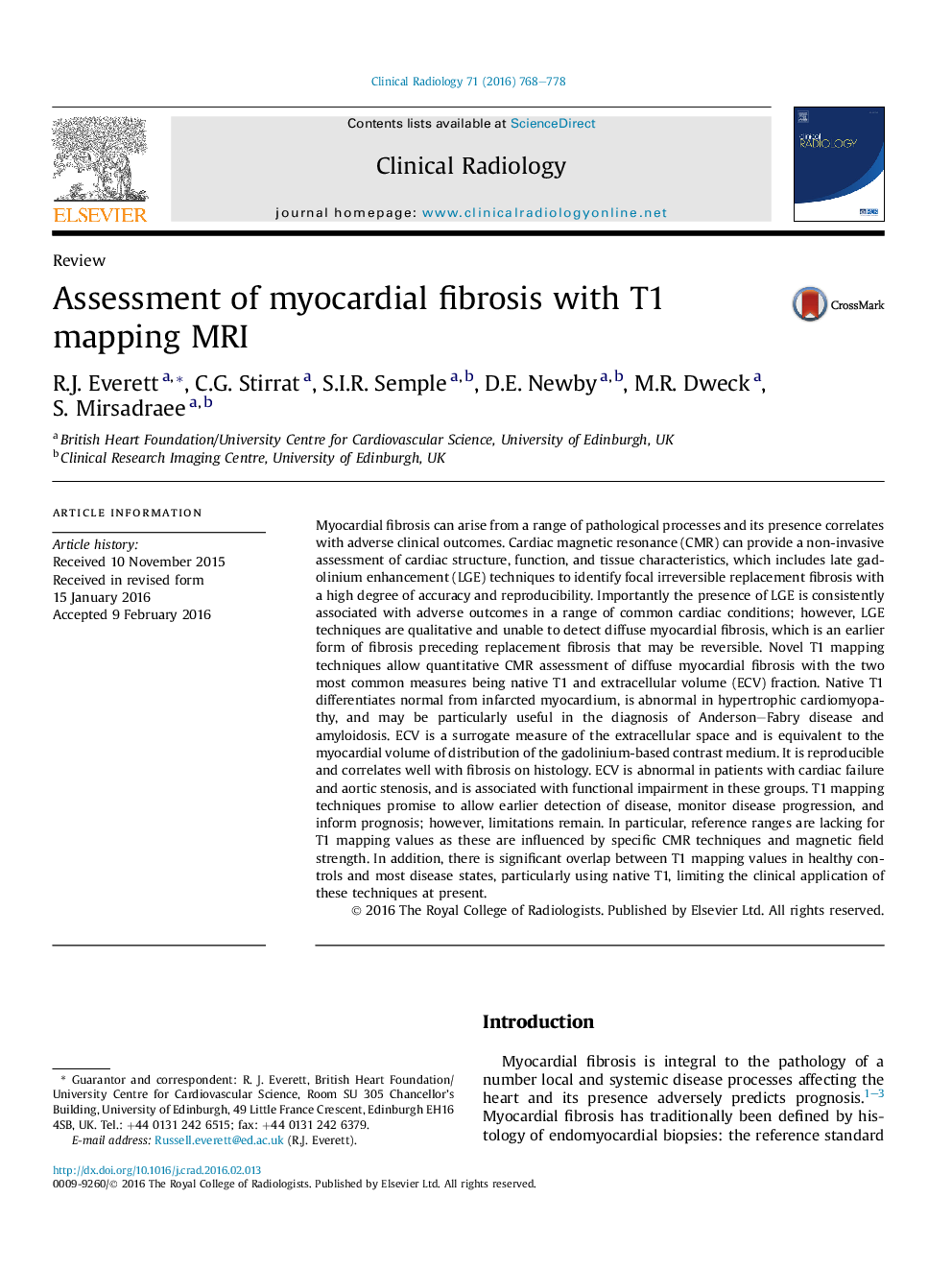| Article ID | Journal | Published Year | Pages | File Type |
|---|---|---|---|---|
| 3981166 | Clinical Radiology | 2016 | 11 Pages |
Myocardial fibrosis can arise from a range of pathological processes and its presence correlates with adverse clinical outcomes. Cardiac magnetic resonance (CMR) can provide a non-invasive assessment of cardiac structure, function, and tissue characteristics, which includes late gadolinium enhancement (LGE) techniques to identify focal irreversible replacement fibrosis with a high degree of accuracy and reproducibility. Importantly the presence of LGE is consistently associated with adverse outcomes in a range of common cardiac conditions; however, LGE techniques are qualitative and unable to detect diffuse myocardial fibrosis, which is an earlier form of fibrosis preceding replacement fibrosis that may be reversible. Novel T1 mapping techniques allow quantitative CMR assessment of diffuse myocardial fibrosis with the two most common measures being native T1 and extracellular volume (ECV) fraction. Native T1 differentiates normal from infarcted myocardium, is abnormal in hypertrophic cardiomyopathy, and may be particularly useful in the diagnosis of Anderson–Fabry disease and amyloidosis. ECV is a surrogate measure of the extracellular space and is equivalent to the myocardial volume of distribution of the gadolinium-based contrast medium. It is reproducible and correlates well with fibrosis on histology. ECV is abnormal in patients with cardiac failure and aortic stenosis, and is associated with functional impairment in these groups. T1 mapping techniques promise to allow earlier detection of disease, monitor disease progression, and inform prognosis; however, limitations remain. In particular, reference ranges are lacking for T1 mapping values as these are influenced by specific CMR techniques and magnetic field strength. In addition, there is significant overlap between T1 mapping values in healthy controls and most disease states, particularly using native T1, limiting the clinical application of these techniques at present.
